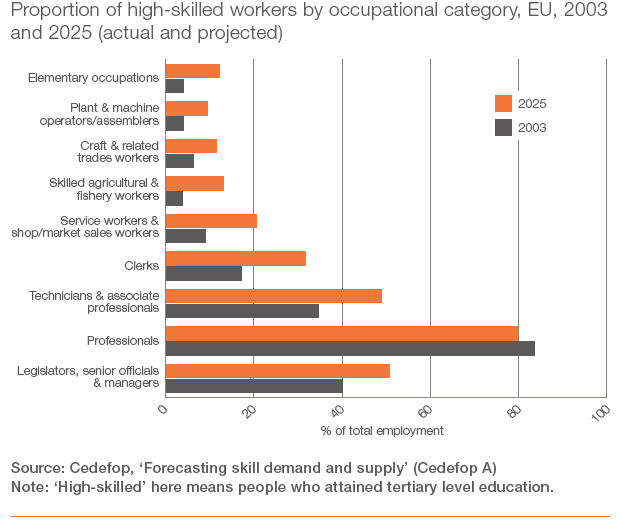Hays, in partnership with Oxford Economics, has released its annual report on Global Skills Index 2016. The Hays Global Skills index is made up of seven indicators that are used to create a statistical report that assess the dynamics of the skilled labour market across 33 countries, and include:
- Education flexibility
- Labour market participation
- Labour market flexibility
- Talent mismatch
- Overall wage pressure
- Wage pressure in high-skill industries
- Wage pressure in high-skill occupations
Continued high demand for skilled labor
Overall the skilled labor market has tightened since 2015 and can be seen with particular pressure in European and the Middle East labor markets. In the Americas, simultaneous growth in unemployment and job vacancies, suggest difficulty finding the right skills. Additionally, Hays notes no change in skilled labor supply from 2015, however, there is a talent mismatch score, suggesting the strengthening in companies demand for skilled labor. This trend points to risk for U.S. manufacturing jobs while showing the shift in the skilled labor market demand.
Artificial Intelligence and Robots Disrupting Labour?
Are we headed for a new normal, whereby on top of the forecasts for unemployment, there is a large number of those who chose not to participate in the labour market? These are working-age people who choose not to participate, and the numbers are growing substantially. The International Labor Organization (ILO) estimates 26 million joined this group in 2015, and globally this represents an estimated two billion people.
AI and the “fourth industrial revolution” are having an impact, and some predict that potentially half of all jobs in the US and the UK will be transformed or disappear.

While the continued pursuit of Artificial Intelligence and Robotics holds the potential to eliminate a large percentage of jobs that exists today, for example, those that include repetitive tasks, it also represents an opportunity for new skills. Skills which are comfortable with technology and using creativity to apply technology in new ways—things humans are still good at.
Top 5 Countries with the highest demand for skilled labor
- Sweden
- U.S.
- Luxembourg
- Spain
- Germany
Top recommendations from Hays:
1.) Address skilled migration to tackle the ever-growing skills gap.
Actionable: Opening of labor markets to appeal to overseas candidates.
2.) Implement smarter training programs to ensure business are future proofed.
Actionable: Business and government work together to create policies to develop skills of future.
3.) Tackle low productivity through better technology and employee engagement.
Actionable: Business to ensure better technology is part of the solution while ensuring fully engaged employees.
References:
@HaysWorldwide. “Introduction | Hays Global Skills Index.” Hays Global Skills Index Introduction Comments, http://www.hays-index.com/the-index/introduction/.
“Fast Forward 2030.” CBRE, CBRE Ltd., Commissioned by Genesis, 2014, http://www.cbre.com/research-and-reports/future-of-work.
Dolphin T (ed) (2015) Technology, globalisation and the future of work in Europe: Essays on employment in a digitised economy, IPPR. http://www.ippr.org/publications/technology-globalisation-and-the-futureof-work-in-europe

